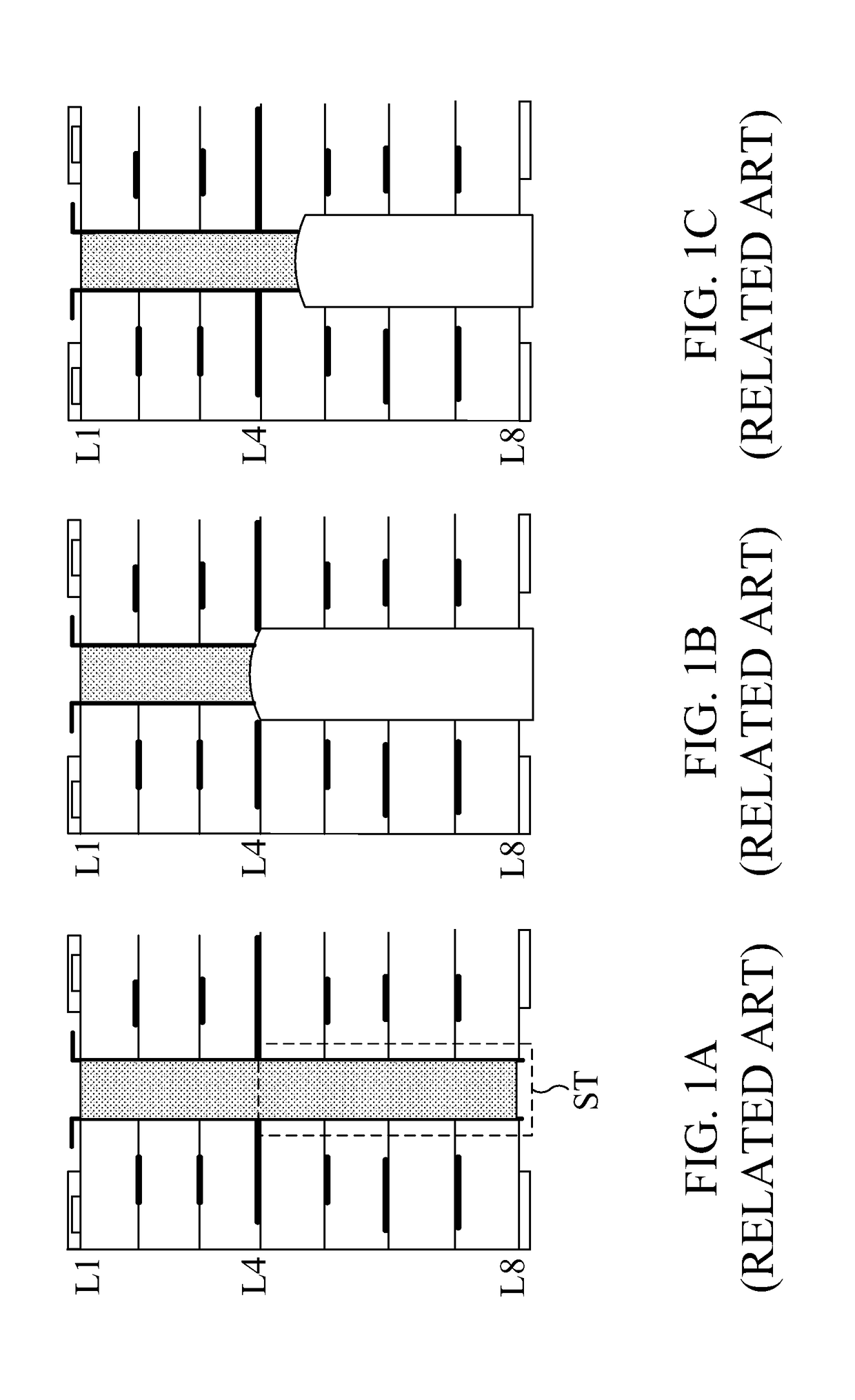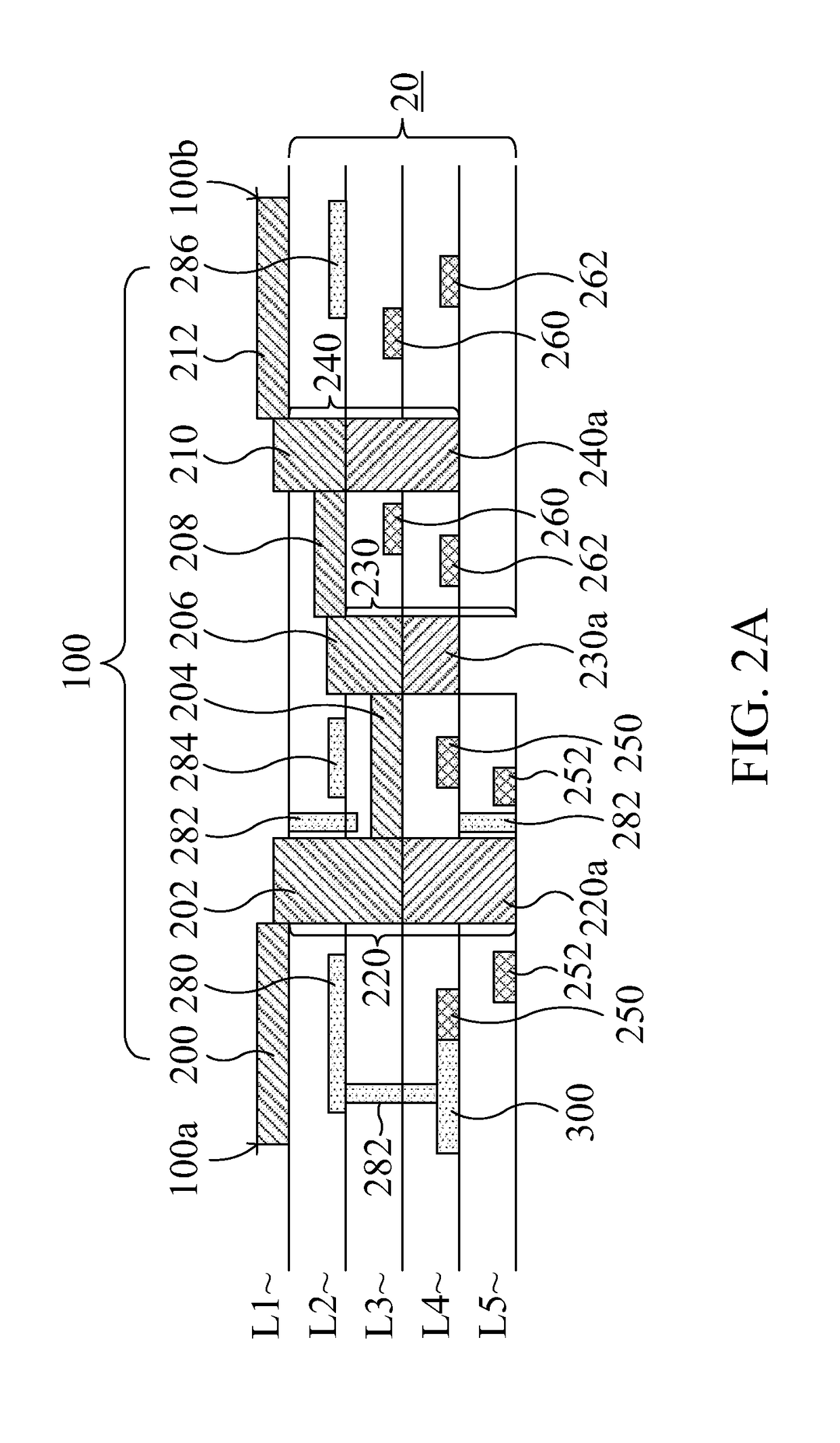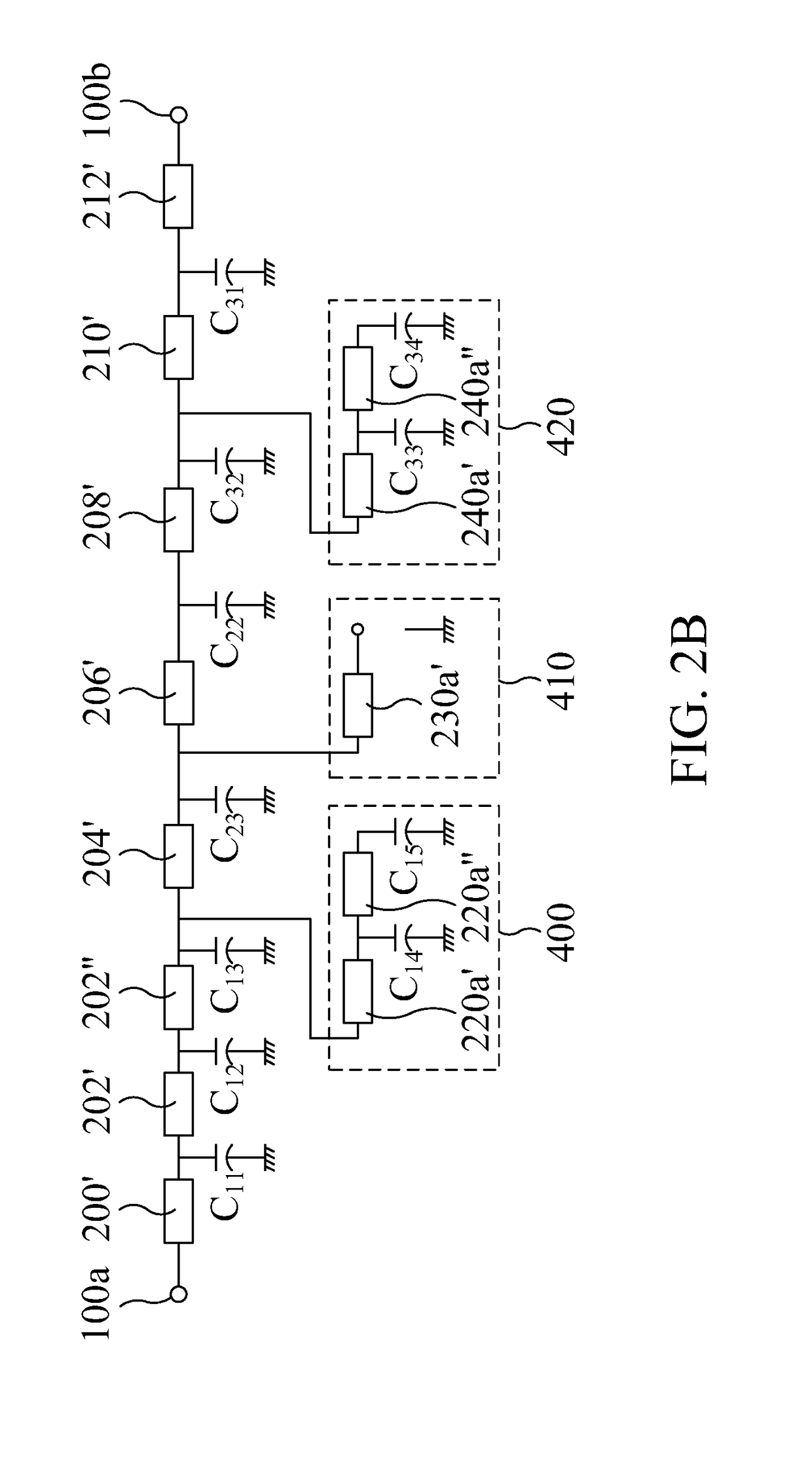Impedance matching structure of transmission line in multilayer circuit board
- Summary
- Abstract
- Description
- Claims
- Application Information
AI Technical Summary
Benefits of technology
Problems solved by technology
Method used
Image
Examples
Embodiment Construction
[0021]The invention will now be described more specifically with reference to the following embodiments. It is to be noted that the following descriptions of preferred embodiments of this invention are presented herein for purpose of illustration and description only. It is not intended to be exhaustive or to be limited to the precise form disclosed.
[0022]Please refer to FIG. 2. A transmission line 100 is formed with conductive members 200, 202, 204, 206, 208, 210 and 212, wherein each of the conductive members is one of the sections divided from the transmission line 100. A plurality of grounding members 250, 252, 260, 262, 280, 282, 284, 286, 300 are provided, and the grounding members include various forms of ground lines or sections corresponding to the conductive members. The transmission line 100 can be divided into a plurality of sections, each including one of the conductive members. Among the conductive members in this example, the conductive members 200, 204, 208 and 212 a...
PUM
 Login to View More
Login to View More Abstract
Description
Claims
Application Information
 Login to View More
Login to View More - R&D
- Intellectual Property
- Life Sciences
- Materials
- Tech Scout
- Unparalleled Data Quality
- Higher Quality Content
- 60% Fewer Hallucinations
Browse by: Latest US Patents, China's latest patents, Technical Efficacy Thesaurus, Application Domain, Technology Topic, Popular Technical Reports.
© 2025 PatSnap. All rights reserved.Legal|Privacy policy|Modern Slavery Act Transparency Statement|Sitemap|About US| Contact US: help@patsnap.com



